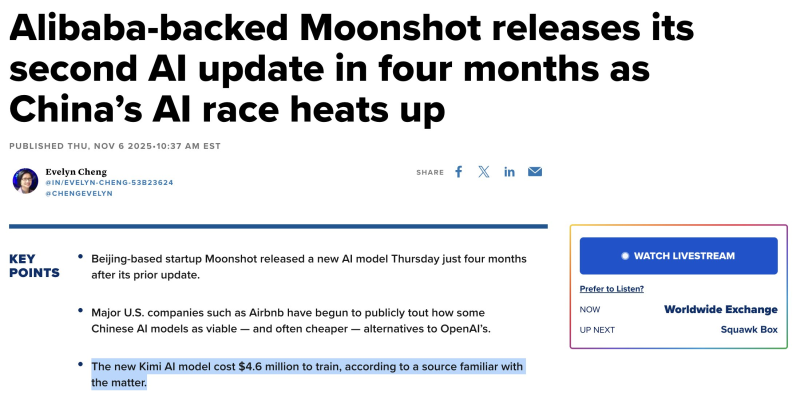⬤ Kimi's latest model reportedly cost only $4.6 million to train, according to sources cited in CNBC coverage. "The new Kimi model was trained with only $4.6M !!!?? Like 1/100 of their US counterparts? Can that be true!?" Wang asked. The number stands in sharp contrast to the hundreds of millions U.S. labs typically spend, pointing to fundamentally different approaches to compute efficiency.

⬤ Wang invoked a compelling historical parallel to frame the achievement: "In 1969, NASA's Apollo mission landed people on the moon with a computer that had just 4KB of RAM." Combined with the observation that "Creativity loves constraints," this framing positions Kimi's budget as part of a tradition of breakthrough innovation under severe limitations—a narrative now central to discussions about China's AI development despite restricted access to NVIDIA's high-end hardware.
⬤ Yuchen Jin reinforced this perspective: "If you ever wonder how Chinese frontier models like Kimi, DeepSeek, and Qwen are trained on far fewer (and nerfed) Nvidia GPUs than U.S. models… Creativity loves constraints." The Apollo comparison appeared again, emphasizing how limitations can drive architectural discipline and smarter optimization. Both analysts present China's AI sector as competing through strategic efficiency rather than massive budgets.
⬤ If a frontier-level model can truly be trained for $4.6 million while maintaining competitive performance, long-held assumptions about AI development costs may need rethinking. This efficiency could accelerate model proliferation, reshape U.S.-China competitive dynamics, and pressure American labs that depend on brute-force compute. Whether Kimi's approach becomes a template for future development or remains an outlier is now the industry's most pressing question.
 Marina Lyubimova
Marina Lyubimova

 Marina Lyubimova
Marina Lyubimova


